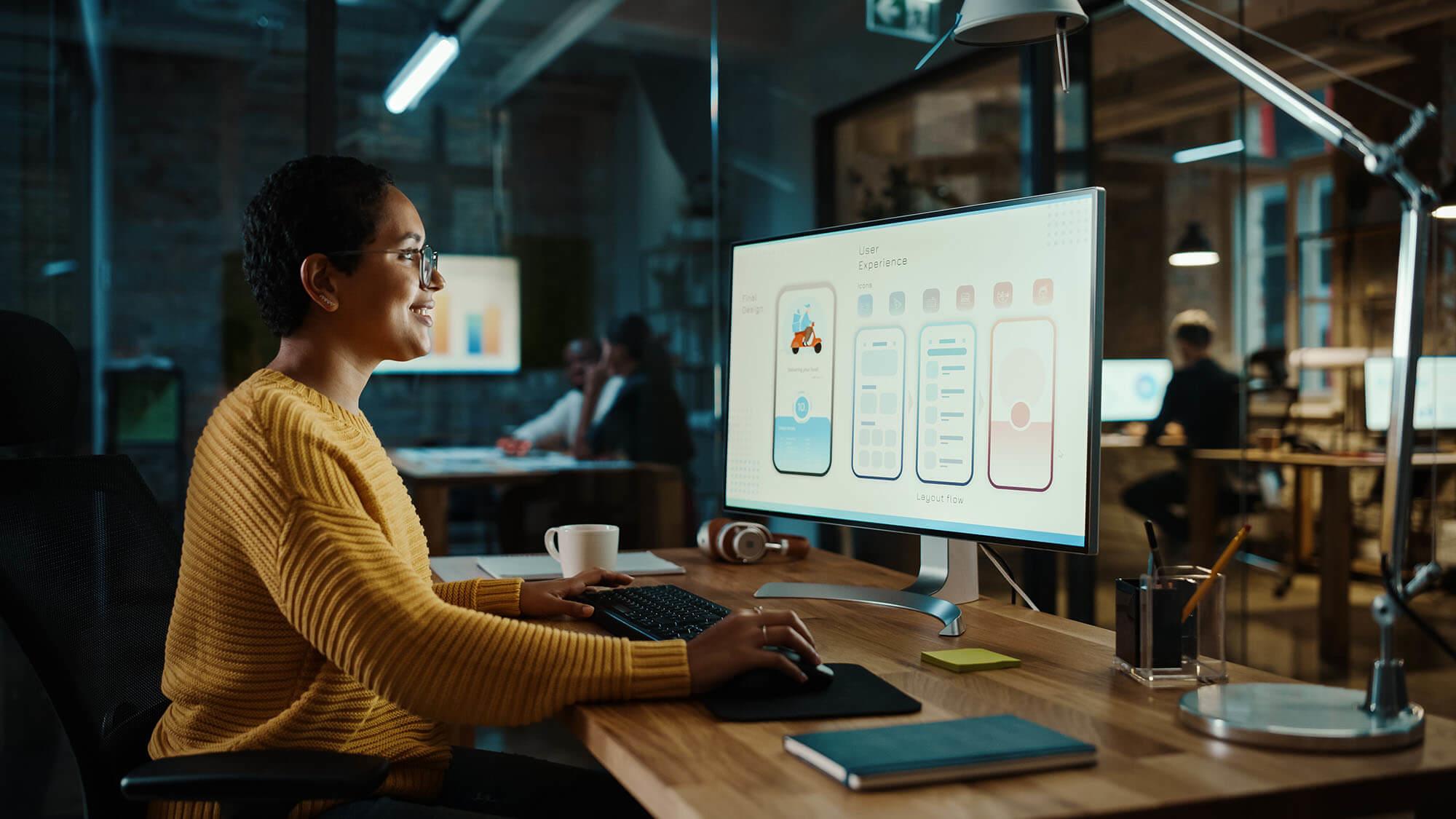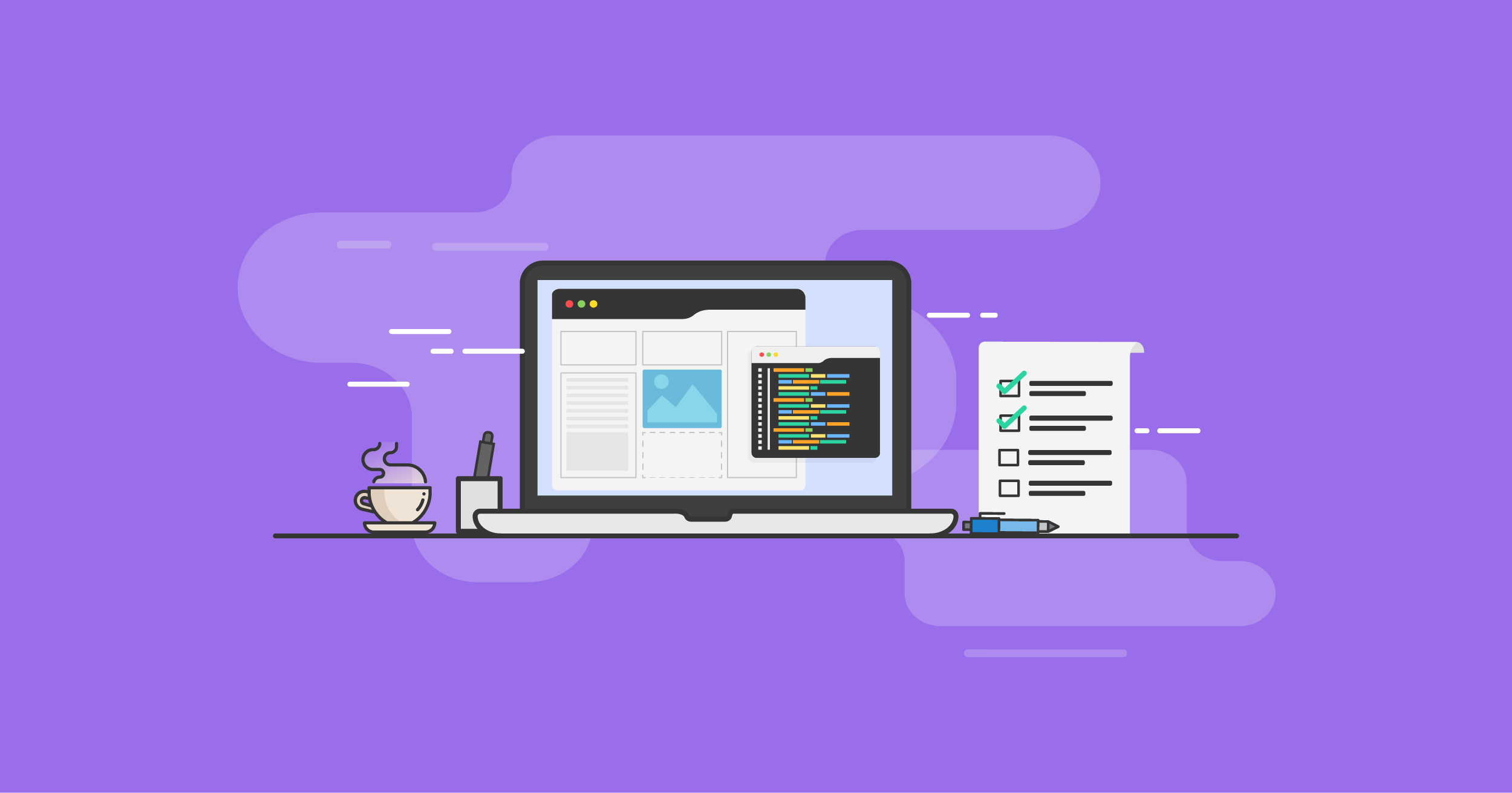Discovering the Fundamental Principles and Finest Practices of Efficient Website Design for Boosted User Experience and Engagement

Importance of User-Centered Layout
User-centered style (UCD) offers as a foundation of efficient website design, emphasizing the need of customizing electronic experiences to fulfill the demands and preferences of users. By prioritizing the individual's viewpoint, UCD makes certain that internet sites are not only useful however appealing and likewise user-friendly.
The relevance of UCD depends on its capability to enhance customer complete satisfaction and retention. They are a lot more likely to return and recommend it to others when customers discover a website simple to browse and lined up with their expectations. This method fosters a much deeper emotional link, allowing brands to develop depend on and commitment amongst their audience.
Additionally, UCD assists in the identification of customer pain factors via study and testing, enabling designers to deal with these concerns proactively. By entailing users in the design procedure, whether through meetings, studies, or usability testing, designers gain valuable insights that inform much better decision-making.
Inevitably, the execution of UCD not only boosts the total individual experience but also drives quantifiable business results. Internet sites that embrace user-centered methods tend to see higher conversion rates and boosted performance metrics, underscoring the critical role of UCD in modern-day internet design.
Trick Design Concepts
Efficient website design is grounded in key layout principles that boost usability and aesthetic charm, further structure on the structure established by user-centered layout. These concepts consist of consistency, visual power structure, and comments, which together develop an user-friendly user experience.
This knowledge assists customers comprehend the user interface and navigate with simplicity, reinforcing brand name identification. Visual hierarchy, achieved through size, color, and positioning, guides customers' attention to the most vital content, making details a lot more appealing and accessible.

Incorporating these vital layout principles cultivates an unified mix of capability and aesthetics, ultimately resulting in boosted customer satisfaction and interaction. By adhering to these fundamental principles, designers can develop websites that not only look enticing however also provide a enjoyable and effective individual experience.
Ideal Practices for Usability
Usability is a keystone of successful website design, including a series of methods that boost the overall experience for users. To achieve ideal functionality, it is vital to prioritize instinctive navigating. Clear menus and rational paths enable users to discover info promptly, decreasing irritation and enhancing contentment.
Furthermore, using regular style components, such as shade systems and typography, promotes familiarity and alleviates navigation. Users should not have to relearn exactly how to engage with different areas of the website. Ensuring that your website is receptive across numerous gadgets is important, as a raising number of customers accessibility content on mobile tools.
One more finest method entails integrating access features, such as alt text for pictures and key-board navigation alternatives, to suit individuals with varied needs. Examining usability via user responses is vital, as real-world insights can disclose unforeseen concerns and areas for renovation.
Enhancing Visual Power Structure
A well-defined visual pecking order is critical for leading customers with an internet site, permitting them to quickly discern the significance of numerous components on a page. This can be accomplished with the critical usage of size, comparison, spacing, and color (web design Johannesburg). Bigger aspects naturally attract focus initially, making headings or vital contact us to activity much more popular
Color can likewise play a considerable role in developing hierarchy; for circumstances, utilizing a strong color for buttons can aid them stick out versus a more low-key background. Furthermore, comparison between message and background is important for readability, making certain that customers can conveniently navigate material without stress.
Whitespace, or unfavorable space, is an additional important aspect of visual pecking order. It gives breathing room around about his components, helping to group associated products and guiding the customer's eye from one section to an additional. By effectively utilizing these layout concepts, web developers can create a seamless customer experience that enhances interaction and decreases cognitive lots.
Ultimately, an attentively created aesthetic power structure not just improves functionality but additionally promotes a more user-friendly interaction with the internet site, causing higher complete satisfaction and retention rates among individuals.
Receptive and Adaptive Style
Visual power structure plays a substantial function in user experience, and its effectiveness should extend across numerous tools and screen sizes. Receptive style employs fluid grids, versatile pictures, and media inquiries to readjust the design and web content dynamically, ensuring that customers take pleasure in a smooth experience no matter of the gadget.
In contrast, adaptive style uses distinctive designs customized to certain screen dimensions. By spotting the user's device and offering a maximized design, flexible layout can provide an extra customized experience. This typically needs multiple variations of the exact same material, which can make complex management and rise development time.
Both methods have their values, and the choice between them depends on project needs, target market, and resource accessibility. Ultimately, the objective is to produce an engaging, user-friendly interface that preserves visual pecking order and functionality across all systems. A well-implemented receptive or adaptive style this not only enhances customer experience however also urges higher involvement and retention prices, vital for the success of any web task.
Verdict
To conclude, efficient web style pivots on the integration of user-centered concepts and best practices that enhance general experience and interaction. By focusing on usability through instinctive navigation, aesthetic power structure, and receptive layouts, designers can create systems that accommodate diverse individual needs. Additionally, the consolidation of availability go to this website attributes and regular layout components ensures a seamless communication throughout gadgets. Highlighting individual responses and visual considerations inevitably cultivates complete satisfaction, retention, and boosted efficiency in the digital landscape.
In the quickly advancing digital landscape, understanding the basic concepts and ideal methods of effective internet style is paramount for promoting improved individual experience and interaction - web design Johannesburg.Functionality is a keystone of effective internet design, including a variety of practices that boost the total experience for customers. By efficiently employing these style concepts, web developers can produce a seamless user experience that boosts interaction and decreases cognitive load
Responsive layout employs fluid grids, flexible images, and media queries to readjust the design and content dynamically, making certain that customers delight in a smooth experience regardless of the tool. A well-implemented receptive or flexible design not only enhances individual experience but also urges higher engagement and retention prices, vital for the success of any web job.
 Mara Wilson Then & Now!
Mara Wilson Then & Now! Jenna Jameson Then & Now!
Jenna Jameson Then & Now! Ashley Johnson Then & Now!
Ashley Johnson Then & Now! Marques Houston Then & Now!
Marques Houston Then & Now! Lucy Lawless Then & Now!
Lucy Lawless Then & Now!